River Democracy Act: Protecting Headwater Streams Protects Rivers
Protecting streams is as important as protecting rivers.
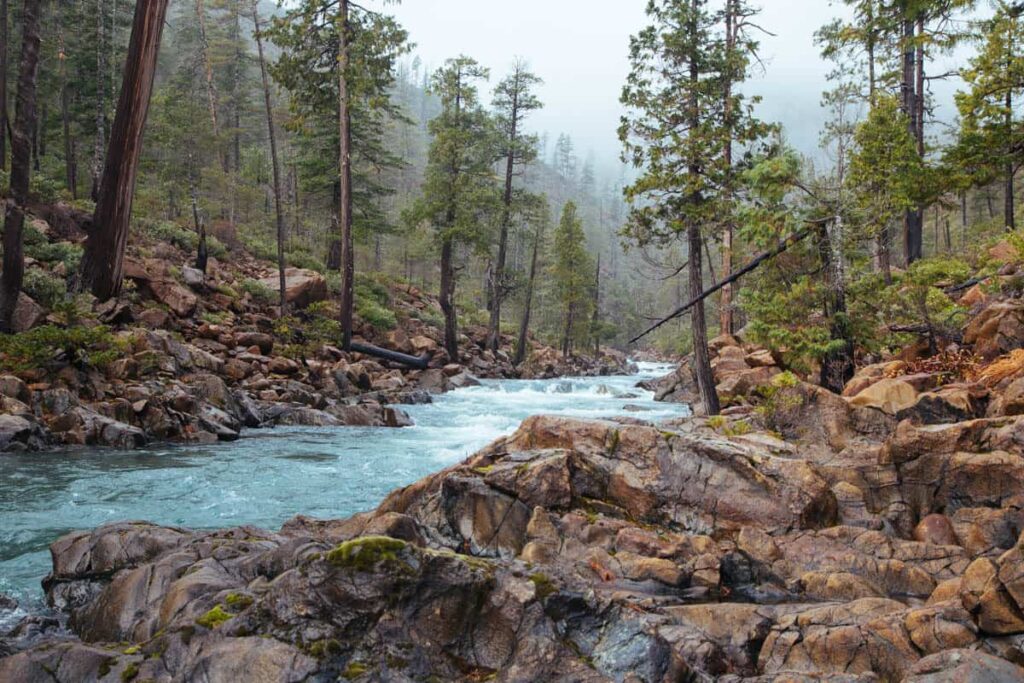
As our collective understanding of the value of healthy watersheds has grown, so too has our appreciation of the critically important role of source water and intermittent streams — those that flow only part of the year — play in providing clean water, habitat and recreation. Across Oregon we have many examples of intermittent and headwater streams that may not flow year round, but provide a myriad of benefits to the larger landscape, watersheds and communities.
If we want to preserve our clean water, recreation, and habitat, it is just as important to protect these streams as it is to protect better known rivers such as the Deschutes, the Owyhee, and the Rogue — in fact, many of these legendary rivers are fed by the vital intermittent headwater streams that come to life each season. These often ephemeral streams give life to the larger rivers and surrounding ecosystems and are increasingly important in the face of climate change. They are the capillaries of the circulatory system of a watershed that allow the river to fan out across the landscape and breathe, delivering life to every corner of Oregon.
More than 1.7 million people in Oregon receive drinking water from public drinking water systems that rely at least in part on intermittent, ephemeral, or headwater streams. According to the Environmental Protection Agency, in Oregon 16,029 total miles of streams provide water for surface water intakes supplying public drinking water systems; of this, 9,134 miles (57 percent) are intermittent, ephemeral, or headwater streams.
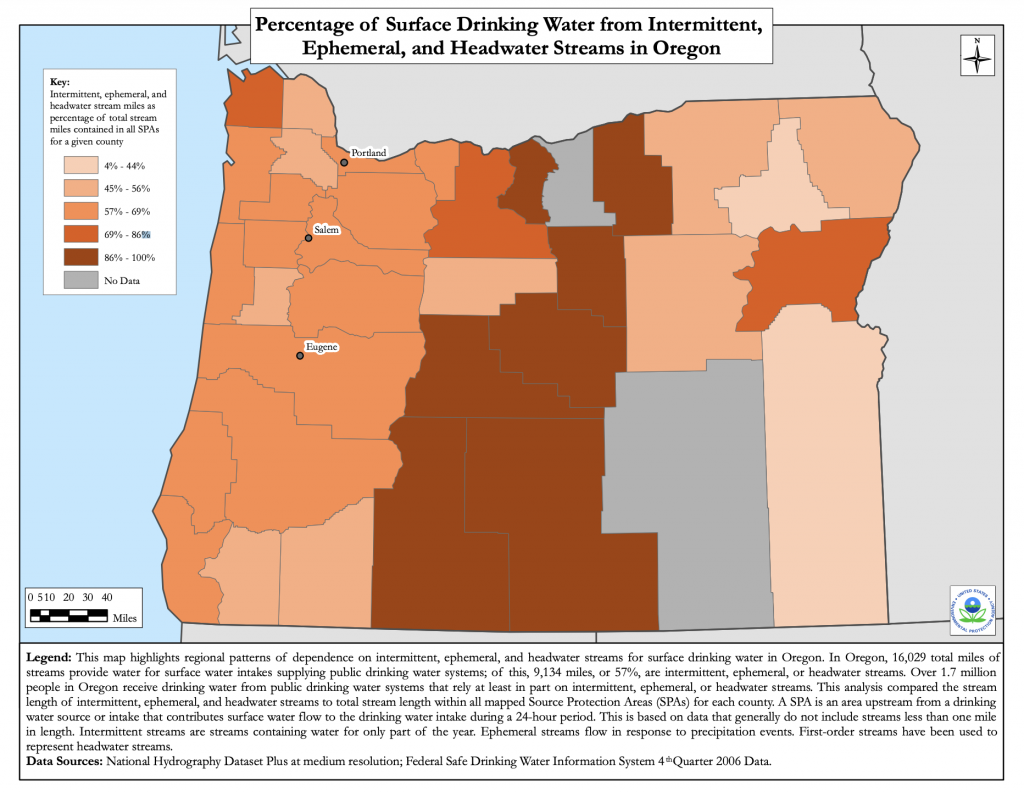
For years, we’ve learned the hard way what can happen when we leave these streams unprotected. Hindsight being what it is, we now know it would have been easier to leave a river’s floodplain or wetlands connected to a river to help store floodwaters or recharge aquifers than to reconnect them decades later, for example. We used to remove all of the wood from rivers and streams thinking that the salmon could migrate more easily, but now we know the importance of woody debris in rivers to provide habitat and a shady sanctuary when temperatures rise. Each lesson provides a better understanding of the ways watersheds and rivers work — from top to bottom and side to side — and informs our own work to protect intact functionality before it’s compromised or lost.
Headwaters sort, store and distribute vital nutrients downstream; whole communities of bugs, plants, fish and birds rely on nutrients that originate in headwater streams. They also filter out pollutants, excess silt and maintain water quality throughout a watershed. Even streams that run dry seasonally or intermittently — some 60 percent of all those in the US — are in themselves essential ecosystems that support entire biological communities based on the predictability they’ll run dry during certain times. Headwater streams represent essential migration corridors for spawning salmonids and all manner of wildlife.
Among their many vital roles, headwater streams are the frontline of defense for rivers against climate change. Many serve a dual role as the gatekeepers of vital groundwater — both as collection areas for recharge and as distributors of cold, clean groundwater and snowmelt that help keep temperatures livable for fish and so many others downstream dependent on it, not to mention freshwater for humans to drink and irrigate with. Nowhere is this function more important than in arid desert watersheds.
Headwater streams at upper reaches of watersheds come loaded with lessons about their critical function to the perennial streams and rivers they feed downstream. We’d be wise to protect headwaters now as there may be no do-overs on this one. Without headwaters, by definition, there is no river downstream. Damage or loss of headwater habitats echoes throughout the watershed and beyond.
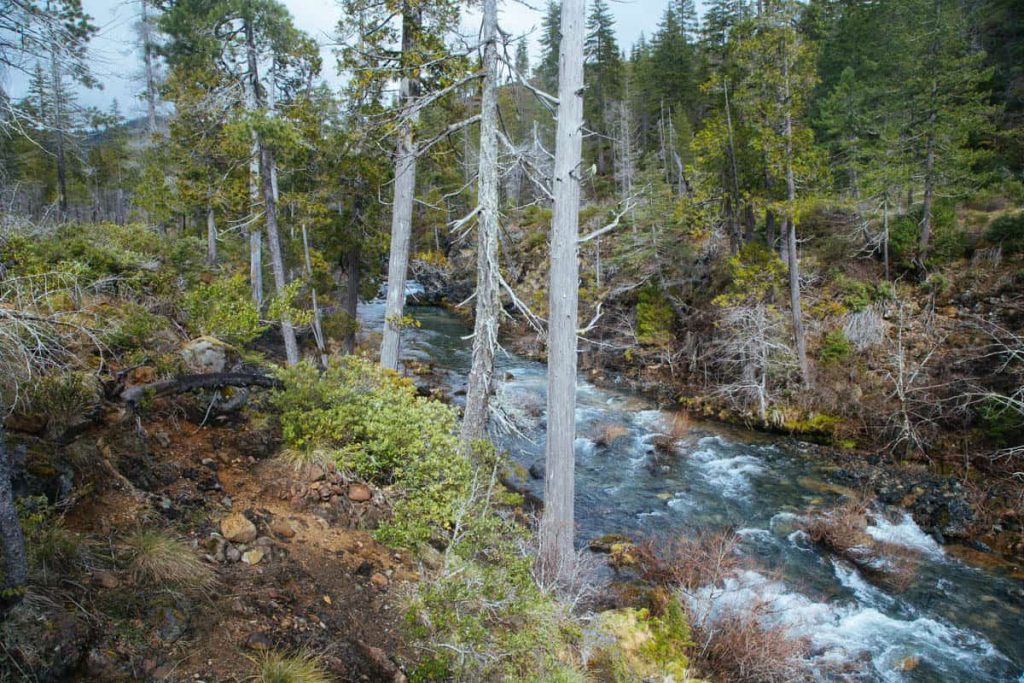
Fortunately for Oregonians, Senators Wyden and Merkley have introduced the River Democracy Act, aimed at protecting more than 4,600 miles of new Wild and Scenic Rivers in the state, including many intermittent and headwater streams. This bill, informed by listening sessions in urban centers, remote communities and everywhere in between, aims to protect rivers and streams nominated by more than 15,000 Oregonians. The Wild and Scenic Rivers Act is one our nation’s best tools for safeguarding freshwater rivers and streams for future generations, and will ensure our rivers keep functioning as nature intended — including those that show themselves during certain seasons. Whether we can see them or not, these streams are working hard for all of us, and it’s time we get to work for them.
Take action to thank Senators Wyden and Merkley for their leadership: https://ouroregonrivers.org/take-action/.
Learn more about two Headwater and Intermittent streams protected in the River Democracy Act:
- Dry Creek, a tributary of the Owyhee River in southeast Oregon, courses through rarely seen combinations of rock and erosion patterns that have carved its long pools. Dry Creek’s unique geology and has allowed it to retain a genetically unique population of redband trout in an area where most neighboring redband populations have been compromised or lost. Dry Creek also provides outstanding wildlife habitat for sensitive species such as the Columbia spotted frog.
- Rough and Ready Creek is a key tributary of the Illinois River in southwest Oregon. Originating in the Kalmiopsis Wilderness, Rough and Ready meanders down through the South Kalmiopsis Roadless Area in characteristic bends and braids. Its unique geology, natural diversity and gin-clear waters have combined over the ages to form a floodplain environment exceptionally rich in rare plant communities, earning Rough and Ready its reputation as a “botanical wonderland.”
- Basin Creek is a headwater stream in the Joseph Creek watershed an important sub-watershed of the Grand Ronde River. Basin Creek is a cold water source that emerges on lands of the Nez Perce Tribe in Northeast Oregon before flowing through National Forest. They refer to this area as the “Precious Lands” and Basin creek is a prime source of clean water important for salmon and steelhead.


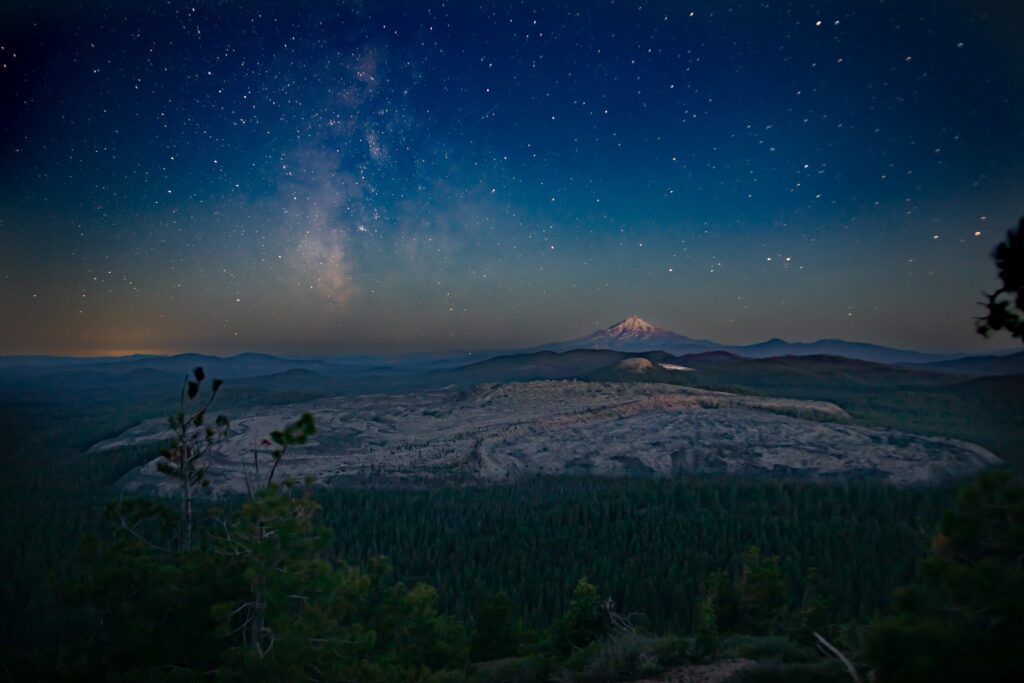
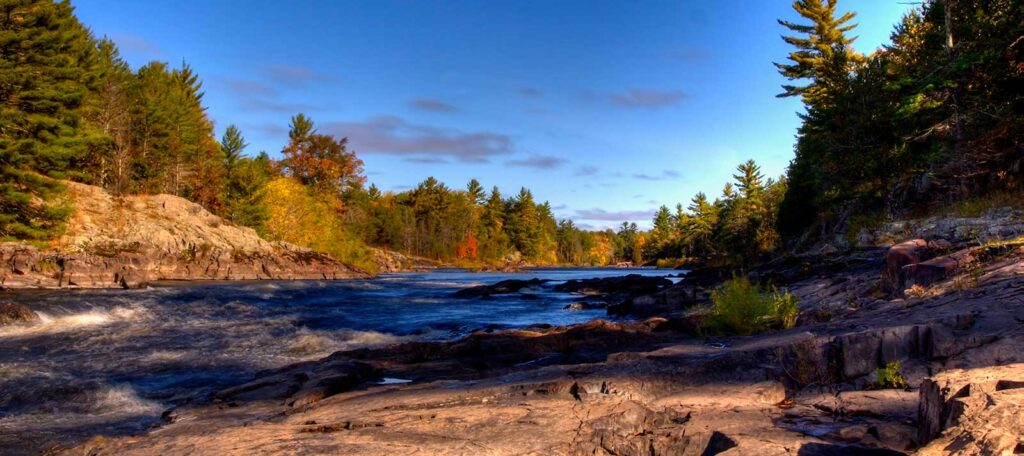
1 response to “River Democracy Act: Protecting Headwater Streams Protects Rivers”
I want to thank David and American Rivers for this post highlighting the importance of protecting headwaters streams and wetlands.
Pictured in the post are two unique “creeks” in southwestern Oregon on the Rogue-Siskiyou National Forest that are often what’s called “groundwater dependent ecosystems.” Both flow though a relatively rare, highly faulted and fractured ultramafic geology, known generally as “serpentine.”
Both are of these wild creeks are U.S. Forest Service Candidate Wild and Scenic Rivers with the highest of water quality. Neither are intermittent. And though they’re “creeks” by name, they are the size of small rivers parts of the year.
Rough and Ready Creek is particularly unusual. When it hits a certain point on the valley floor, it appears dry, or mostly dry, on the surface in the summer. However, underneath the vast expanse of large dry cobble is an, extensive and mysterious hyporheic zone
From its mouth up Rough and Ready Creek is what’s called a “losing” stream system. Many people some distance from the creek itself are drinking water from wells most likely fed by this subsurface flow.
In its upper reaches Rough and Ready Creek is a “gaining” system fed by a complex groundwater system. You know this in part by the presence of Serpentine Darlingtonia Wetlands—a unique rare plant wetland (one of the rarest habitat types in North America. The rare plants associated with these wetlands require consistent perennial flows of cool water..
While flows in streams underlain by more normal geology decline in late summer, flows in Rough and Ready Creek remain fairly consistent due to the groundwater input. This is known as “delayed discharge.”
We’re so grateful that Senator Wyden’s River Democracy Act, proposes to designate the upper watershed of Rough and Ready Creek as a National Wild and Scenic River due to its unique geology and intricate groundwater system. The visionary legislation recognizes the complexity and value of unusual stream systems like Rough and Ready Creek and seeks to protect them.
Please write Senator Wyden in support of Rough and Ready Creek, a unique and most rare Wild and Scenic River.